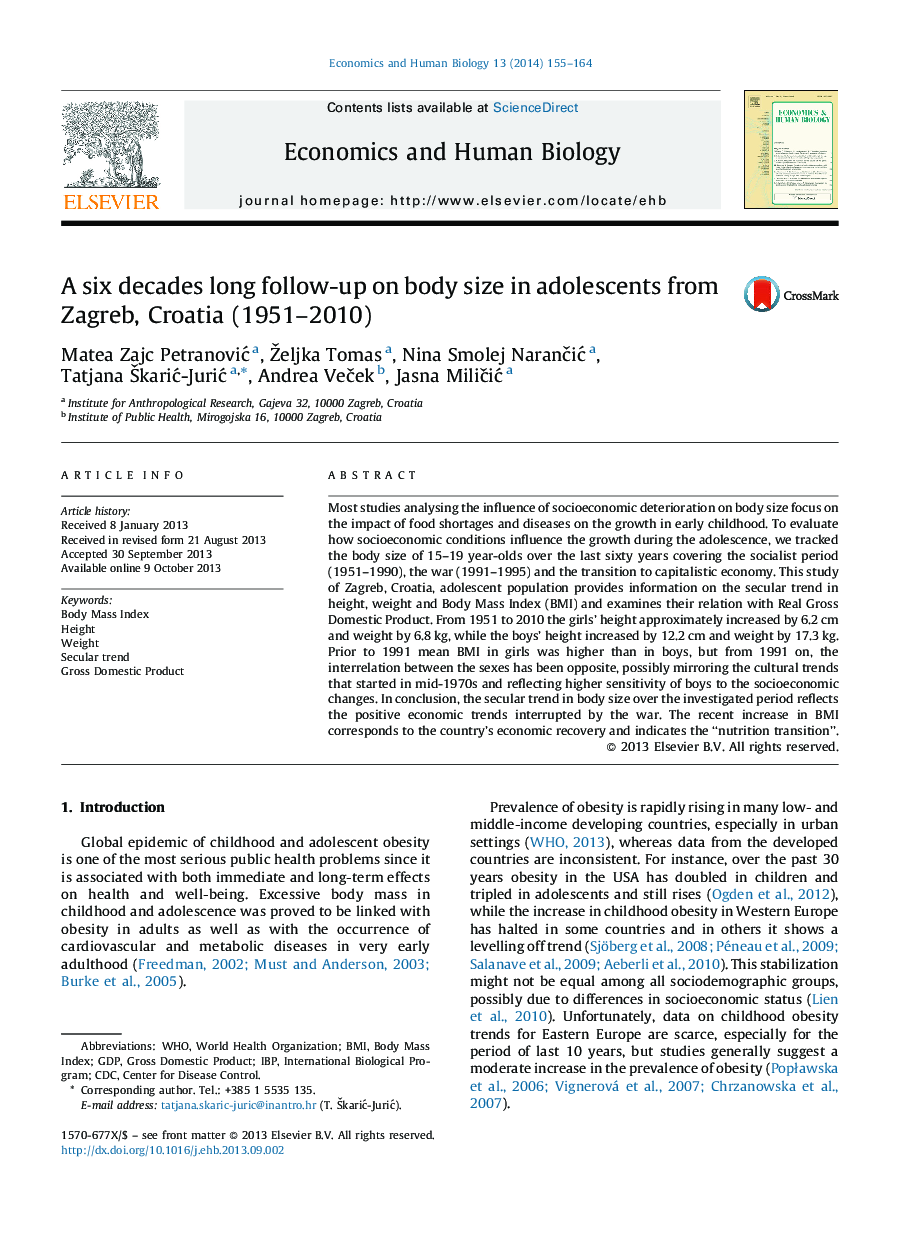| کد مقاله | کد نشریه | سال انتشار | مقاله انگلیسی | نسخه تمام متن |
|---|---|---|---|---|
| 5057073 | 1476566 | 2014 | 10 صفحه PDF | دانلود رایگان |

- The changes in body dimensions and BMI followed the trend in national GDP in Zagreb adolescents.
- From 1951 to 2010, an approximate increase in height was 6.2Â cm in girls and 12.2Â cm in boys.
- In the same period, an approximate increase in weight was 6.8Â kg for girls and 17.3Â kg for boys.
- The prevalence of adolescent obesity, especially in boys, is growing.
- According to CDC 95th BMI percentiles, in 2010 there were 3.5 times more obese girls and 3.7 more obese boys than in 1997.
Most studies analysing the influence of socioeconomic deterioration on body size focus on the impact of food shortages and diseases on the growth in early childhood. To evaluate how socioeconomic conditions influence the growth during the adolescence, we tracked the body size of 15-19 year-olds over the last sixty years covering the socialist period (1951-1990), the war (1991-1995) and the transition to capitalistic economy. This study of Zagreb, Croatia, adolescent population provides information on the secular trend in height, weight and Body Mass Index (BMI) and examines their relation with Real Gross Domestic Product. From 1951 to 2010 the girls' height approximately increased by 6.2Â cm and weight by 6.8Â kg, while the boys' height increased by 12.2Â cm and weight by 17.3Â kg. Prior to 1991 mean BMI in girls was higher than in boys, but from 1991 on, the interrelation between the sexes has been opposite, possibly mirroring the cultural trends that started in mid-1970s and reflecting higher sensitivity of boys to the socioeconomic changes. In conclusion, the secular trend in body size over the investigated period reflects the positive economic trends interrupted by the war. The recent increase in BMI corresponds to the country's economic recovery and indicates the “nutrition transition”.
Journal: Economics & Human Biology - Volume 13, March 2014, Pages 155-164